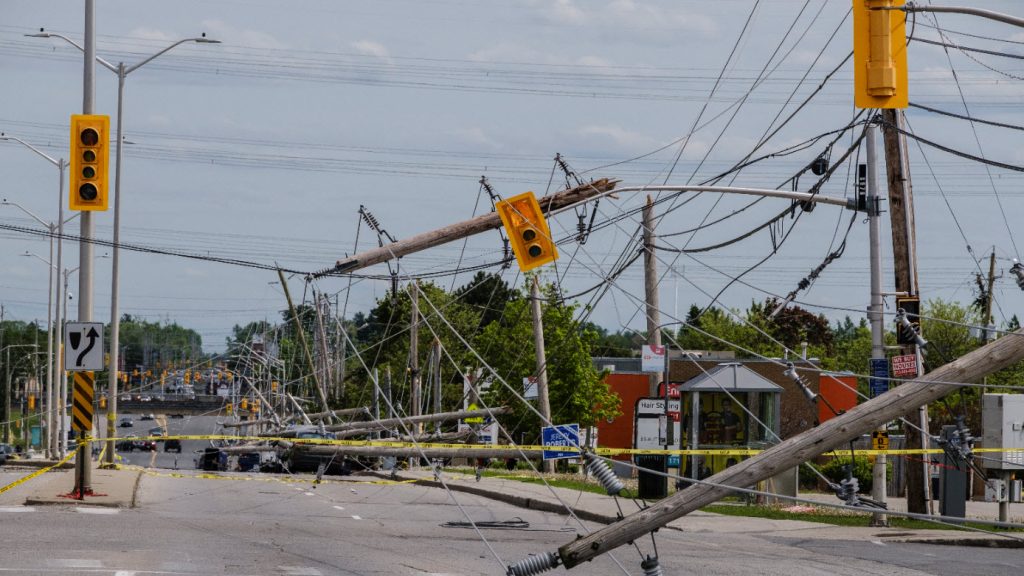Ontario currently over capacity with pediatric ICU beds, new data shows
Posted Nov 11, 2022 01:00:00 AM.
New data shows that Ontario is over capacity with pediatric intensive care unit (ICU) beds, with the number of children receiving care exceeding the number of available units.
There are 122 children in pediatric ICUs as of Wednesday, up from 111 the day before, Critical Care Services Ontario’s daily census shows. Only five children in ICUs have COVID-19. The province has a total of 112 intensive care beds for children.
The health minister’s office tells CityNews that Ontario Health has directed all pediatric hospitals to “have a surge plan in place.”
“All Ontario hospitals have also been directed to use adult hospital capacity to support pediatric surges,” the ministry of health’s statement reads, in part. “The minister has spoken to the pediatric hospital chief executive officers (CEOs) recently and offered the government’s full support to get through this challenging time.”
Pediatric hospitals have been inundated with sick patients for weeks.
Last week, Ontario Health directed general hospitals to accept children 14 and older who need critical care to ease the burden on pediatric facilities. Children’s hospitals have said most kids in intensive care are five years old and younger.
“All Ontario hospitals have also been directed to use adult hospital capacity to support pediatric surges,” Ontario’s health minister tells CityNews.
“We are taking a team Ontario approach, as we have throughout the entire pandemic, and have increased hospital capacity across the board by adding over 3,500 new critical care, acute and post-acute hospital beds.”
The health minister says the government is aware that emergency department volumes have increased yearly.
“We are not okay with the status quo. That is why we have invested in human health resources, freed up beds across the province and expanded 911 models of care to address wait times as demand rises heading into the fall and winter season.”
There have been an average of 1,414 children aged four and under visiting emergency departments over the last week in the province, compared to the historical seven-day average of 560 children. For those aged five to 17, there have been, on average, 1,210 visits to the emergency department over the last week compared with a historical average of 325 visits.
CityNews reported in October that unprecedented demand has been behind the shortage of children’s pain and fever medications across Canada, such as Advil and Tylenol. The Ontario Pharmacists Association (OPA) said that demand for liquid Tylenol and Advil skyrocketed over the summer due to the unexpected circulation of viruses.
Federal health minister Jean-Yves Duclos said last month that more children are getting sick, which has worsened due to COVID-19. Despite Health Canada’s efforts, government officials say the children’s pain medication shortage could last until December.
The new pediatric data comes after a leaked report showed the grim state of the healthcare system, with provincial doctors warning the system will collapse if action isn’t taken.
The report suggests 90 per cent of patients waited up to 12 hours in an emergency room in September — a 17 per cent increase compared to the same month last year. Once the patients were admitted, 90 per cent of them waited up to 45 hours to complete their visit — up 40.5 per cent compared to last year.
A second pediatric intensive care unit (PICU) has opened at the Children's Hospital of Eastern Ontario (CHEO).
Hospitals officials said the move was made to address the overflow of critically ill babies and young children.
Over the past few weeks, CHEO has seen an early arrival of the peak viral season driven by acute viral respiratory infections including respiratory syncytial virus (RSV), flu, COVID-19 and other viruses. These are at levels never before seen in CHEO’s 48-year history.
“Unprecedented feels like an overused word at the moment, but there’s no better term to describe the crisis facing our pediatric health-care system right now,” said Dr. Lindy Samson, CHEO’s chief of staff and chief medical officer. “We appreciate the additional funding from the Ministry of Health and Ontario Health which is making it possible for us to respond.”
CHEO is currently experiencing more than double its normal volume of younger patients. More kids are requiring admission, and this has many young patients and their families stuck in the emergency department for longer than ever before. To address this crisis, CHEO has been taking a series of measures to ensure young people in our community can still get the emergency, critical and acute care they need, including:
- Opening a second PICU in space which has been temporarily reassigned from CHEO’s surgical day unit. This new PICU makes five more beds available for children and youth with intensive care needs.
- Redeploying clinicians with critical care skills from other parts of CHEO to help in the PICU.
- Focused on patient-facing needs, CHEO is reassigning staff to support emergency, acute and critical care needs.
- Hiring more staff as quickly as possible to provide care to patients.
- Scheduling staff from across the organization who have put up their hand to provide non-clinical support to frontline care teams.
- Expanding staffing and clinic hours at the Kids Come First and East Ottawa Kids care clinics.
- Embedding specialized discharge planners in clinical teams to ensure young patients safely get home sooner.
- Only when it is safe, postponing some surgeries, procedures and clinic appointments to free up staff with the skills needed to care for the very sick children and youth needing urgent care at CHEO.
- Adopting enhanced peak viral season measures for the safety of families and staff, which includes having only one parent or designated caregiver at the bedside.
“At this time, we need Ottawa to come together as a community and help reduce the spread of these viral illnesses in our community, so CHEO can get back to providing care for all children and youth who need it, in a timely manner,” added Dr. Samson. “So please wear a mask in crowded indoor spaces including schools.”
With files from Liam Casey of The Canadian Press








